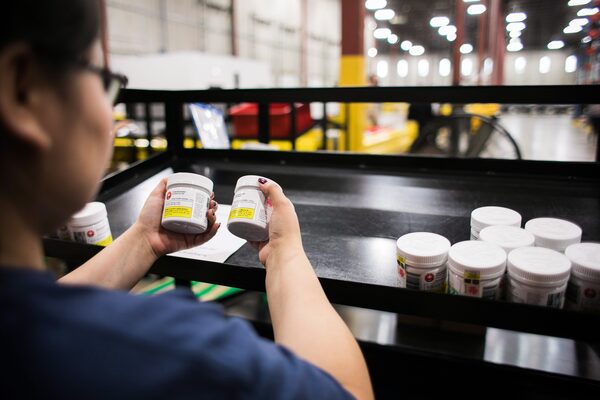The Ontario Cannabis Store (OCS) will expand its third-party distribution system to private companies and offer licensed producers (LPs) the chance to deliver directly to retailers, but the government agency remains the province’s sole wholesaler.
In a Nov. 19 e-mail sent to LPs and seen by Cannabis Professional, the OCS said that any producers interested in direct delivery can schedule a consultation during between Nov. 20-27, when they will be instructed on the “specific terms, conditions and capabilities by which any producer interested in direct-delivery would be required to adhere to.”
The late-afternoon letter followed a consultation period with the industry after Ontario’s provincial pot wholesaler posted a $42-million loss in its latest fiscal year, though it had positive revenues. Though licensed pot store numbers are low in the province, it is widely expected that more retailers will be granted permits in 2020. Additionally, newly legalized concentrated products will soon reach the market, and more warehouse space and locations will increasingly be required to meet demand across the province’s vast area.
Though LP business models have been built around the current distribution system, this hybrid model is still expected to be positive for LPs.

A worker examines cannabis products at the Ontario Cannabis Store distribution centre in an undated handout photo. THE CANADIAN PRESS/Ontario Cannabis StoreHO/The Canadian Press
“The more Ontario can encourage private sector involvement … it will probably be better for them, will drive more revenue to government,” said Omar Khan, national cannabis sector lead at Hill+Knowlton Strategies.
Though Ontario is Canada’s biggest consumer market, only two dozen licensed retail stores have opened more than a year after recreational cannabis was legalized. This compares with more than 330 retail cannabis licences that have been issued in the smaller province of Alberta.
“In response to specific feedback received from producers, the OCS is moving ahead to expand its privately-operated centralized network to continue to drive cost efficiencies for the sector,” said Daffyd Roderick, OCS director of communications, in an emailed statement.
“To support continued improvements in service levels and expansion of product assortment to compete with the illegal market, the OCS will add flow-through capabilities to its privately-operated centralized network over time. We will continue to engage with producers that are interested in taking on direct delivery for their products.”
Though many details of the hybrid model have not been provided, below are some key points about what these changes mean for the burgeoning cannabis industry, which is struggling in a challenging financial environment. The relatively low number of licensed stores across the country means that LPs’ inventories are piling up, discouraging investors and causing some producers to scale back expansion plans.
Direct deliveries will be more attractive for some LPs than others
Several major LPs are located in Ontario and nearby Quebec, meaning that producers in other parts of the country may not have a competitive edge with this opportunity due to the extra transportation costs and time it would take to ship product from facilities in places like British Columbia and Alberta.
Additionally, costs related to direct distribution to retailers – which would include increased numbers of warehouses, storage safes, and other security requirements – may not be financially feasible for most small- and mid-sized LPs.
Though cannabis wholesaling and distribution has been successfully privatized in Saskatchewan, Ontario’s significantly larger population and area means direct distribution by LPs to retailers may not be as profitable as initially expected. On top of this, it does not appear there will be any opportunity for retailers to negotiate prices and exclusive products with LPs as the OCS remains the sole wholesaler and sets its selling prices.
The OCS has not provided the timeline on these changes and the industry still requires clarity on when they will be implemented. Some LP facilities may require retrofitting to accommodate any changes that they choose to participate in.
Retailers have expressed their desire for products to be sold directly from LPs as this is expected to ensure a steady stream of product delivery of items consumers are asking for, but when the large Ontario market increases its number of stores around the province, interested LPs will require large injections of capital to accommodate a spike in shipping costs. This could take as many as two years to implement.
Changes likely to speed up product distribution time
As store numbers increase across the provinces, more warehouses and distribution centres are required. Opening its third-party distribution model to more companies is one way to make this happen.
“There’s always benefits to economy of scale. Just the notion of going to the private sector will help,” Mr. Khan said.
“Running a complex supply chain isn’t necessarily the expertise of most governments.”
Editor’s note: An earlier version of this article said the OCS will offer LPs the chance to sell to retailers. This version clarifies this option is to deliver directly.